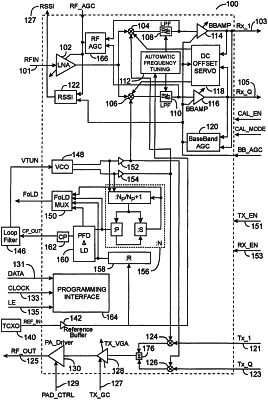| CPC H04W 52/0209 (2013.01) [H04B 1/109 (2013.01); Y02D 30/70 (2020.08)] | 28 Claims |

|
1. A system for power dissipation reduction in a wireless receiver of a battery powered portable wireless device, configured to provide a corresponding increase in battery life of the battery powered portable wireless device, the system comprising:
the wireless receiver of the battery powered portable wireless device configured to receive a wireless signal having a desired signal and an interferer signal, comprising a receiver signal path comprising a plurality of circuits, including a circuit for determining a signal strength of the interferer signal and a circuit for determining a signal strength of the desired signal;
wherein the wireless receiver is designed to operate at a worst-case operating condition with a corresponding worst-case power dissipation from the battery when the received signal strengths of the desired signal and the interferer signal result in the worst-case operating condition; and
wherein the wireless receiver is configured to achieve a reduction in power dissipation from the battery by causing a bias current or an impedance to dynamically vary in one or more of the plurality of circuits in the receiver signal path of the wireless receiver as the signal strengths of the interferer signal and the signal strength of the desired signal vary creating an operating condition better than the worst-case operating condition.
|